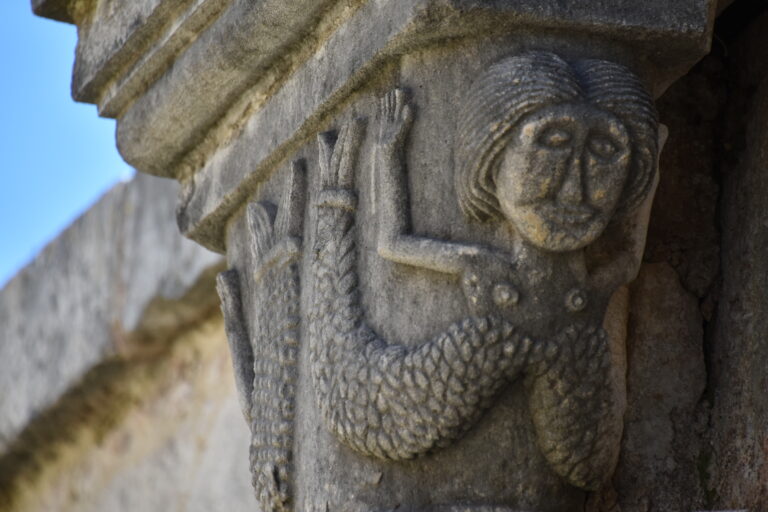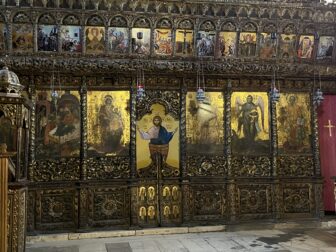Apollonia is one of the most important and fascinating archaeological sites in Albania, located in the southern part of the country, about twelve kilometers from the city of Fier. It was founded in the 6th century BC by Greek colonists from Corinth and the Corinthian colony of Corfu. Named in honor of the god Apollo, who was greatly revered by the Greeks, Apollonia quickly flourished due to its strategic position and the fertile lands surrounding it.
Built on a hill overlooking the Vjosa River plain, Apollonia developed rapidly into a thriving city-state. During the Classical and especially the Hellenistic period, it became one of the most prominent urban centers on the eastern Adriatic coast. Its wealth stemmed from trade, agriculture, and its key location along important communication routes between Greece and Illyria, and later between Rome and the East.
In Roman times, Apollonia maintained its significance and became a center of learning for members of the Roman aristocracy. The future emperor Augustus, then known as Octavian, studied in Apollonia under the philosopher Athenodorus of Tarsus. It was in Apollonia that he received news of Julius Caesar’s assassination in 44 BC—an event that compelled him to return to Rome and begin his rise to power.
During the imperial Roman period, Apollonia began a gradual decline. A devastating earthquake in the 3rd century AD changed the course of the nearby river and damaged the city’s infrastructure and port, leading to a slow but steady abandonment. Over time, the city was buried under layers of earth and forgotten, until it was rediscovered in the early 20th century by French-led archaeological missions.
Today, Apollonia is an archaeological park that draws visitors from around the world, not only for the beauty of its ruins but also for the evocative atmosphere that still lingers among its columns, temples, and remnants of public buildings. One of the most significant structures is the Bouleuterion, the former city council building, located in a monumental square surrounded by elegant colonnades. Another highlight is the stoa, a long colonnaded portico that once served as a public space for gathering, trade, and intellectual exchange.
The most iconic structure of Apollonia is the monumental facade of the city’s center, often referred to as the agora. Dominated by a striking Corinthian-style facade with fluted columns and an intricately decorated pediment, this structure dates back to the 2nd century BC and has become the symbol of the site. It is frequently featured in guidebooks and promotional materials about Albanian heritage.
In addition to civic buildings, Apollonia also housed religious structures, including temples dedicated to Apollo and other deities of the Greco-Roman pantheon. Remnants of these sacred buildings can still be seen among the ruins, along with statue fragments, inscriptions, and reliefs that shed light on the city’s spiritual life. The necropolis, or burial area, located outside the ancient city walls, has yielded numerous artifacts including monumental tombs, ceramics, and jewelry, all of which illustrate the wealth and cultural refinement of Apollonia’s citizens.
Within the archaeological park stands a well-preserved medieval monastery dedicated to Saint Mary. Built between the 13th and 14th centuries, the monastery was erected on the ruins of earlier structures and is a fascinating example of the layering of historical periods and cultures. Today, it houses an archaeological museum that displays many of the artifacts unearthed during excavations—marble statues, capitals, amphorae, coins, daily objects, and inscribed stones. Visiting the museum offers deeper insight into the city’s history and the evolution of the site over the centuries.
The surrounding landscape adds to the site’s charm. The Albanian countryside, with its olive groves, vineyards, and gently rolling hills, provides a serene and timeless backdrop. From the top of the ancient city, visitors can enjoy panoramic views stretching all the way to the Adriatic Sea. The archaeological area covers roughly 140 hectares, though only a portion has been excavated to date. Ongoing archaeological work continues to uncover new data and material, making Apollonia a living site of scientific discovery.
A visit to Apollonia is also an opportunity to reflect on the richness of Balkan cultural heritage, often overlooked or little known to the general public. The site bears witness to the deep interaction between diverse cultures: Greek, Illyrian, and later Roman. This fusion of influences gave rise to a unique urban civilization, leaving lasting marks in architecture, sculpture, language, and traditions.
Apollonia is easily accessible from Fier and Vlora and is increasingly included in international tourist itineraries, thanks in part to efforts by the Albanian authorities to promote and preserve cultural heritage. In recent years, improvements have been made for visitors, including marked walking paths, informational panels, and hospitality facilities. Yet the number of tourists remains moderate, which allows for an authentic and peaceful experience, far from the crowds found at more famous archaeological sites.
Apollonia is thus an essential destination for those who want to explore the history of Albania and the Balkans, and for lovers of archaeology, nature, and the quiet solemnity of ancient places. It is a site that speaks with an ancient and powerful voice, inviting contemplation on time, memory, and lost civilizations. Walking among its ruins means embarking on a journey through the centuries, discovering the vitality of a city that was once a crossroads of cultures, trade, and knowledge. Today, Apollonia continues to tell its story to those willing to listen.


